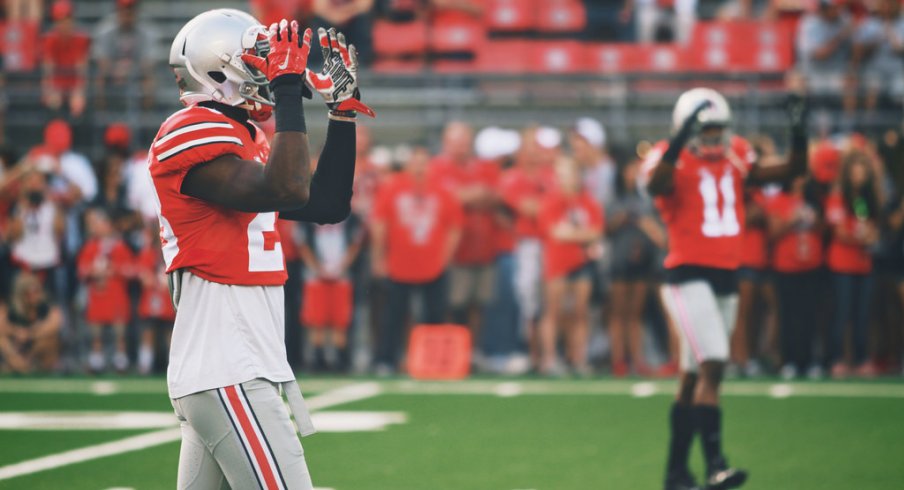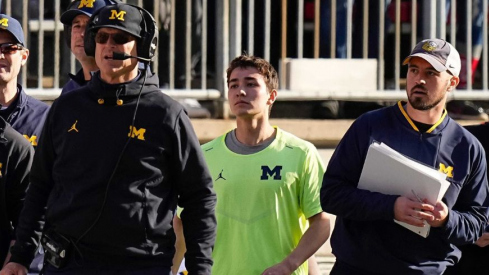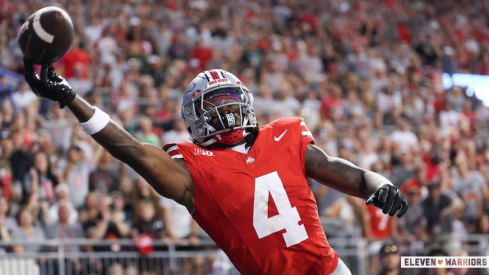One year ago, Chris Ash was hired to fix the back end of the Ohio State defense, patching the leaks in pass coverage that seemed to show up far too often for the 2013 Buckeyes. Many fans (and analysts alike) expected the former Arkansas and Wisconsin defensive coordinator to focus his repair job on installing aggressive, press coverage on the outside.
While starting cornerbacks Doran Grant and Eli Apple certainly benefited from Ash's presence, the biggest change in the OSU secondary however came from the play of his safeties. Though Ash had to replace two departed seniors at the position in Christian Bryant and C.J. Barnett, he also had a blank slate with which to work, getting the chance to teach new habits instead of breaking old ones. His subjects though, could not have seemed more different on the surface.
Vonn Bell came to Columbus as the crown jewel of Urban Meyer's 2013 recruiting class, a group that included impact players like Joey Bosa, Ezekiel Elliott, and J.T. Barrett. Securing the Rossville, GA native's commitment was considered a major victory at the time, as Meyer plucked one of the south's best players away from Alabama, Tennessee, and the rest of his former rivals in SEC.
Conversely, Tyvis Powell's arrival on campus was far less heralded. The former three-star recruit barely registered a blip on the radar of recruiting services, thought by many to only receive his scholarship offer due to the unsettled coaching situation following Jim Tressel's departure.
After a redshirt season in 2011, Powell began working his way up the depth chart, eventually securing the nickel position in 2013 as the team's fifth defensive back and starting a number of games after Bryant was injured. Bell, of course, saw the field right away as a freshman, contributing on special teams with highlights that gave fans a taste of what might be to come in limited stretches on defense.
The pair proved to be a perfect match, but not in the ways many expected. Though there are often two safeties on the field, fans have come to expect the spots to be very different. A traditional "strong safety" often lines up close to the linebackers and is a big, physical player like Kam Chancellor that makes plays against the run, while many picture an athletic center-fielder like Ed Reed or Earl Thomas when thinking of a typical free safety.
That's not the case in the "Cover 4" scheme Ash would employ, however. His safeties both often line up in a 'two-deep shell,' meaning they appear to be splitting the field in half with a pair of zones to each cover at the snap, never giving away their intentions. The key is that once the ball is snapped, however, the pair are liable to make plays anywhere on the field.
This approach far favors technique and subtle adjustments over schemes as a whole, looking to quickly get confident athletes in a position to succeed. As he outlined in his introductory press conference, “To me, to be successful, I think you have to be detailed. You have to be able to coach and teach the fundamentals of the game, and that’s how you develop players. You have to have a consistency with how you prepare yourself so you can prepare them and then get them to play hard.”
As the 2014 regular season got underway, the safety tandem played effectively, even if rarely making headlines. Bell's nose for the ball was apparent right away though, often ranking near the top of the box score for tackles on a weekly basis, eventually finishing second on the team with 92 stops on the year.
But while players like Joey Bosa, Michael Bennett, and Darron Lee became household names for their game-changing highlights, the big gains that so often plagued the Buckeyes the year before seemed to simply disappear with few people even noticing. Bell, Powell, and the rest of the DBs did give up yards to pass-first teams like Cincinnati, but gave up only 6.1 yards-per-attempt, nearly a full yard better than the year prior, good enough for 12th in the nation.
Once the postseason began, this unit would become even more important. With the offense turning to a third-string QB and opponents game-planning for Bosa, the secondary had to take on a larger burden. Luckily, they were more than ready to take on the task.
Yet Ash didn't deter from his original plan, leaving his original structure intact and trusting his safeties to make plays, even with the extra practice time granted in December. Though the defense installed a few wrinkles to counter Wisconsin's big personnel sets that featured multiple tight ends or fullbacks, Ash continued to call his base defenses against the Badgers in passing situations, and doubled down on them throughout the CFB playoffs against both Alabama and Oregon.
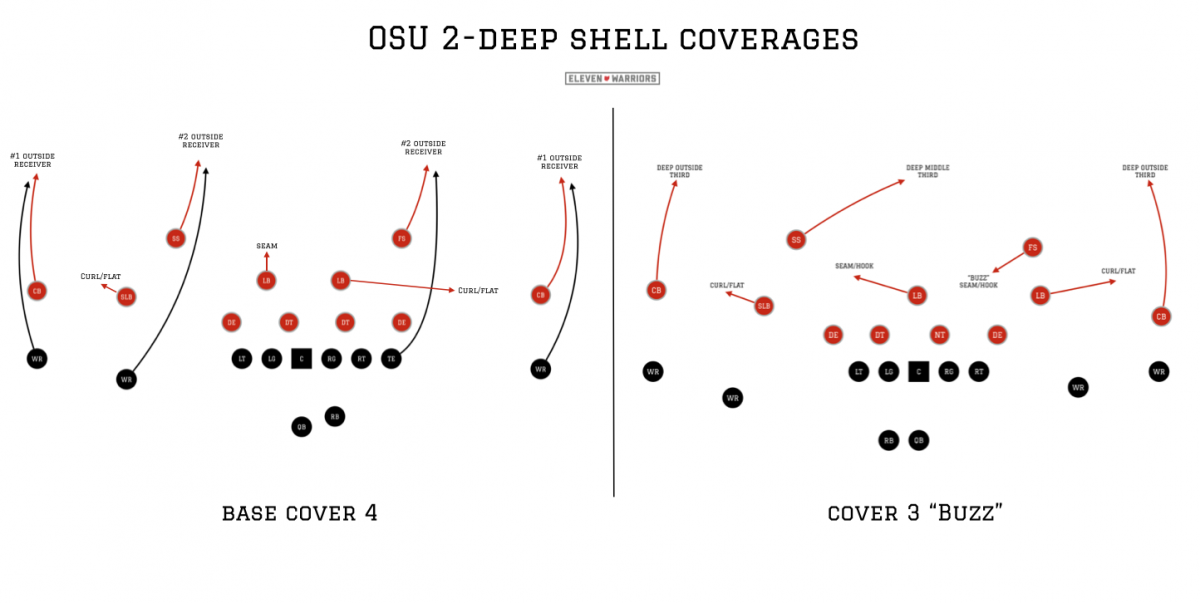
Though the coverages took on subtle adjustments each week, the Buckeyes were able to effectively disguise their intentions, rarely ever giving opposing quarterbacks the crucial read of whether the middle of the field would be open or closed before the snap. Many passing reads, especially at the college level, are determined by the placement of the safeties, as the presence of one safety in the middle of the field (known as 'closed') provides a three-deep, four-under structure, which obviously gives different soft spots for passing routes than the two-deep, five-under zones that come from both safeties lining up deep (or 'open').
But Ash also made life difficult for opponents by allowing either safety to play a specific role. Instead of dividing responsibilities in the traditional sense, Ash simply aligned Bell to the wide side (or 'field'), and Powell to the short side ('boundary') on each play. This approach allowed Ash to keep opposing running games on edge, as the underneath safety that would drop down into the box in a cover 3 look could come from either side, confusing blocking schemes and keeping players free.
At first, Bell seemed to be thriving near the line, finding the football against both the run or the pass when asked to play near the line, as his interception against the Badgers showed.

Though both he and Powell are at parallel depth before the snap, Powell drops deep to become the last line of defense while Bell is able to split a pair of receivers in the flat and bait Joel Stave with his athleticism.
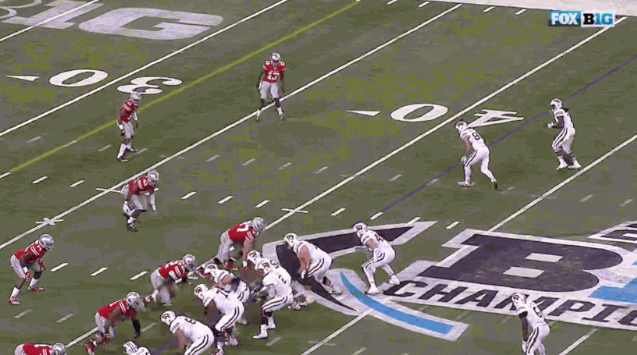
In the Sugar Bowl against Alabama, he showed a similar ability to split a pair of receivers and make a play on the ball, except this time he did so while playing the role of the center-fielder.

But his contributions to the Buckeyes' historic run weren't limited to creating turnovers. The former blue-chip recruit contributed 21 tackles during the three postseason contests, trailing only Lee for stops in that span.
As he showed time and time again in the national championship matchup with Oregon though, Powell was more than able to make plays of his own from the same positions. The Ducks tried to attack the underneath zones with a number of bunch formations and concepts, such as the trail route, which looks to clear out the middle of the field before filling it with a third receiver.
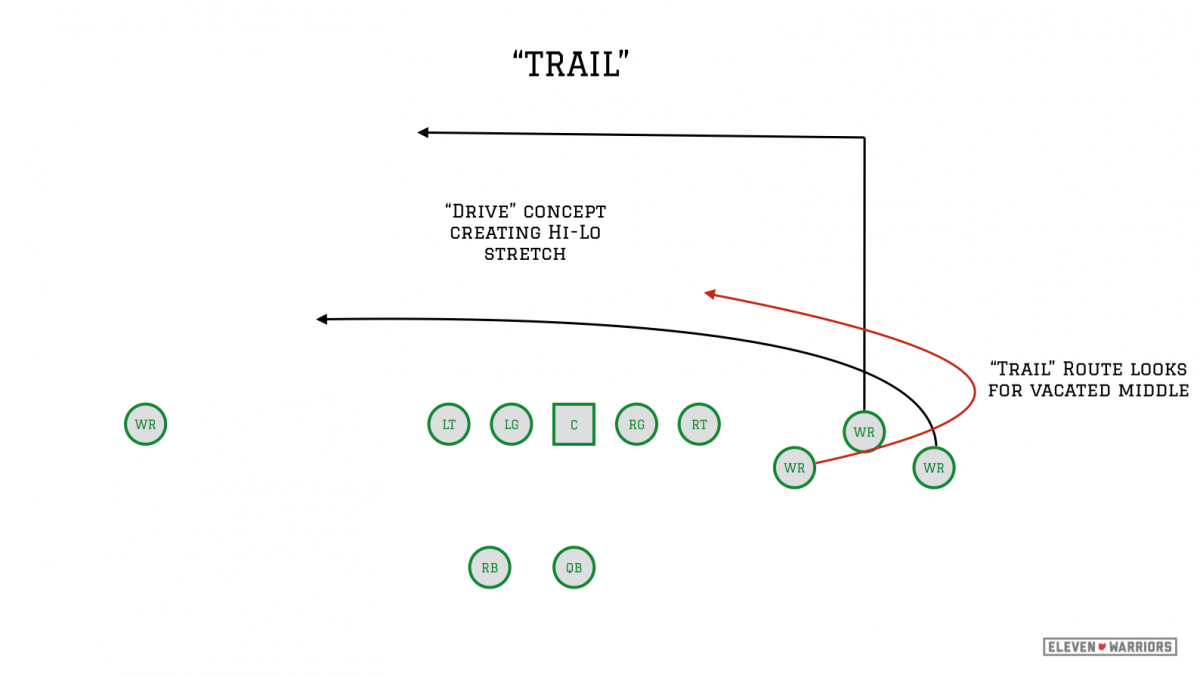
But when asked to drop into the underneath zone, Powell read the break to the outside, and in what was likely a surprise to talent evaluators four years ago, showed the athleticism to burst inside on the receiver's cut and make a huge play on the ball.

Not all the duo's big plays came from the cover 3 set, though. As the Ducks often split the field evenly with two receivers to each side, Ash called for the cover 4 set, making the corners responsible for any vertical action from the outside receivers and leaving the safeties and linebackers to handle the inside men.
But since this was Oregon after all, it wasn't that simple. The Ducks called 'packaged plays' countless times that evening, giving QB Marcus Mariota the option to either hand off to a back, keep to run himself, or make a quick throw to the outside.
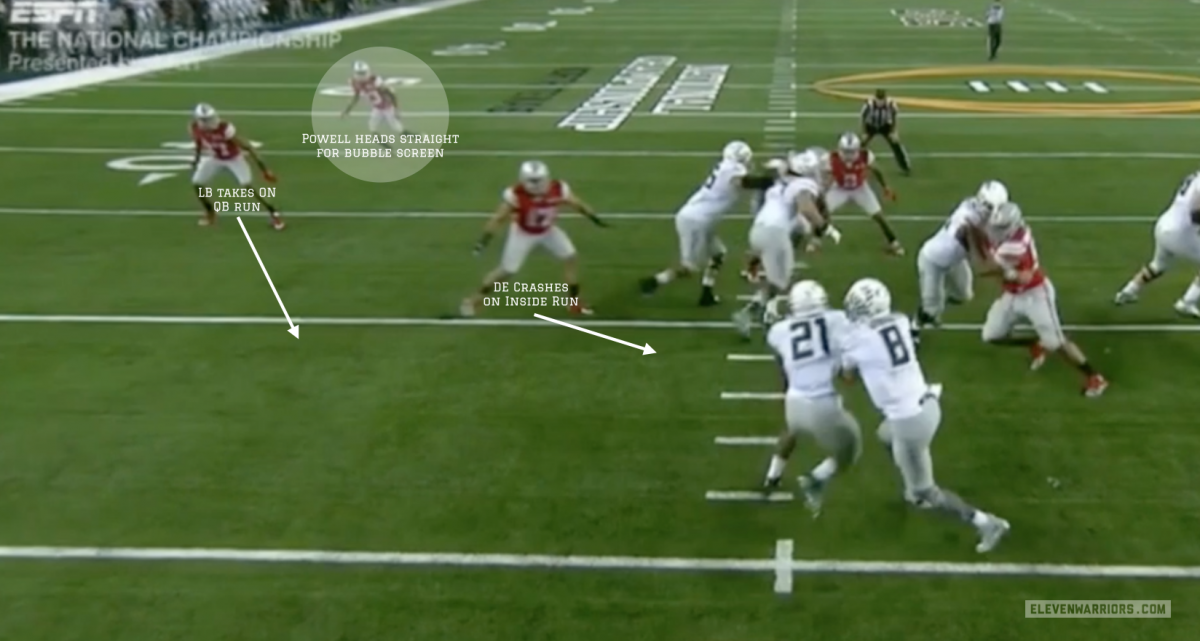
With the defensive end playing the inside handoff, linebacker Josh Perry must be cognizant of Mariota's threat to keep and run around the edge. Meanwhile, the outside receiver releases straight upfield, taking the corner with him and leaving only Powell to make a tackle on the tight end who catches a bubble screen.
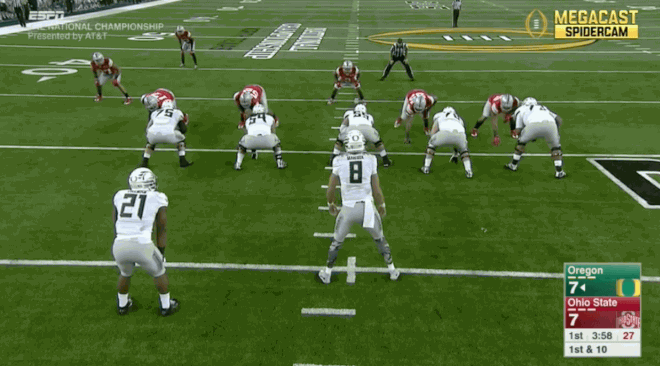
But Powell was more than ready, sniffing out the pass immediately, knowing when and where his responsibilities lie, and stuffing the play for no gain. Such plays seemed to be common throughout the contest, as Powell racked up a game-high nine tackles on the evening.
Perhaps no play was bigger though, than the one Powell made on a fourth-and-goal in the second quarter, as both teams looked to trade scoring punches. The Ducks regularly spread the OSU defense across the entire field throughout the game, often attacking the boundary side of the formation with their running game and forcing Powell, not Bell, to step up.
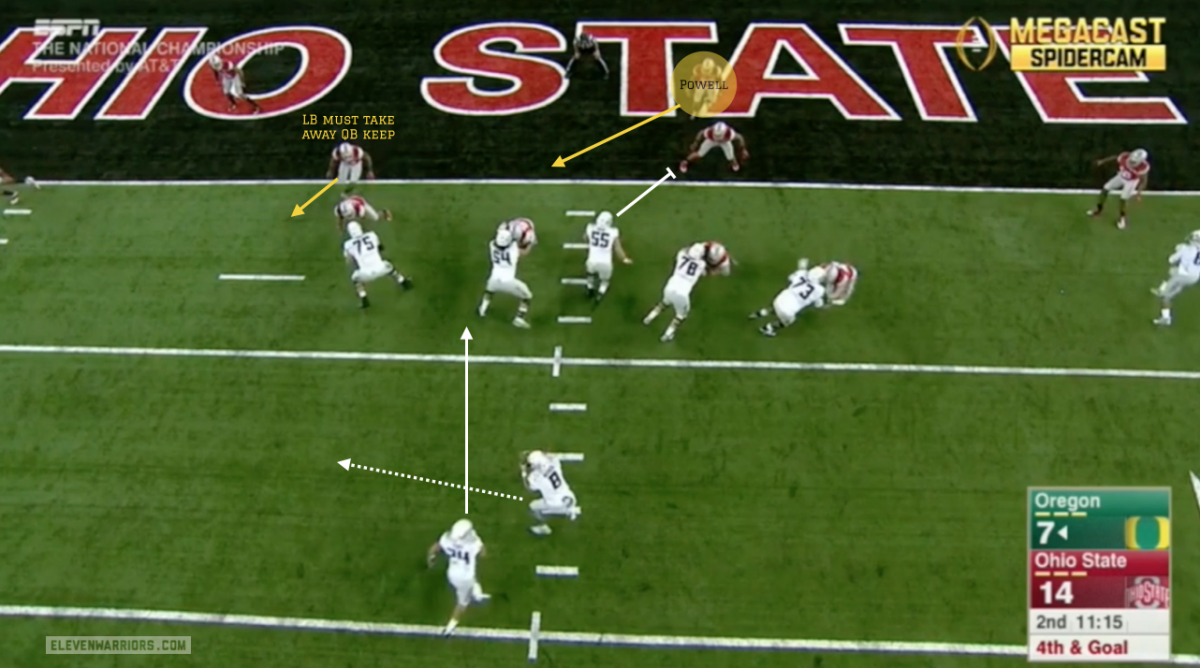
The Ducks called a simple inside zone-read, giving Mariota the option to keep based on the movement of middle linebacker Curtis Grant. As Grant steps outside to take away Mariota's outside lane, the center blocks down on Lee, the other inside linebacker, leaving Powell as the only man to make the tackle.
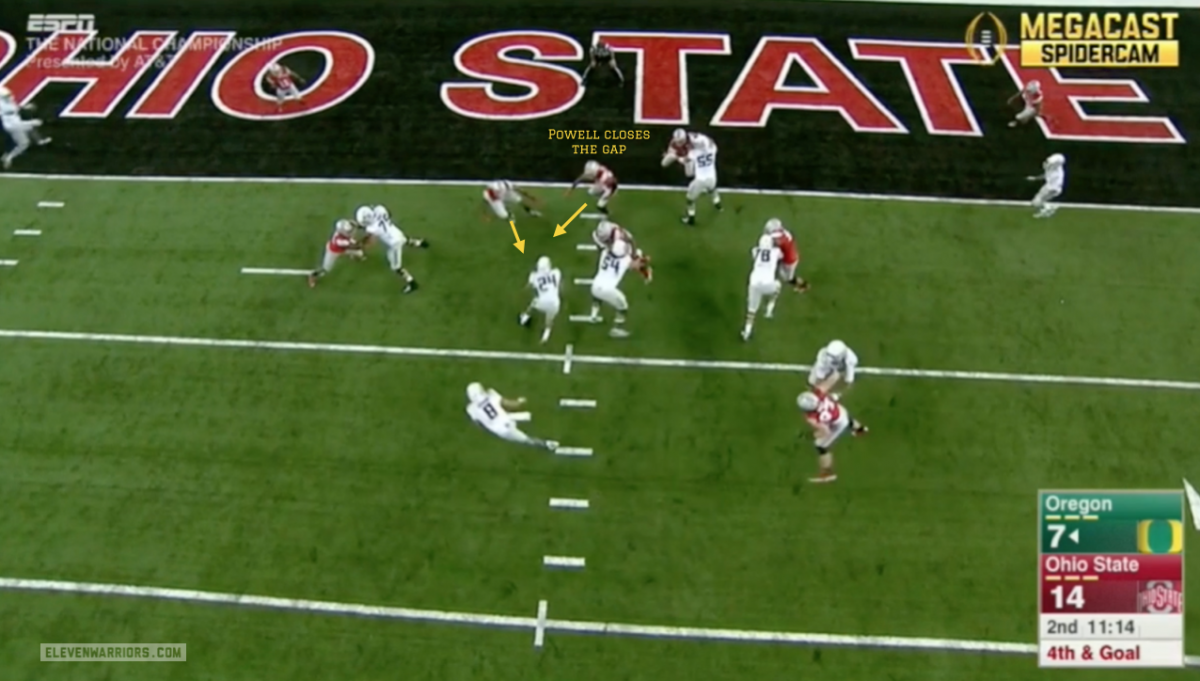
Though Grant does a good job to read the play and recover back inside, running back Thomas Tyner has made his choice to go at the smaller Powell, effectively attempting to run right through the Bedford native.
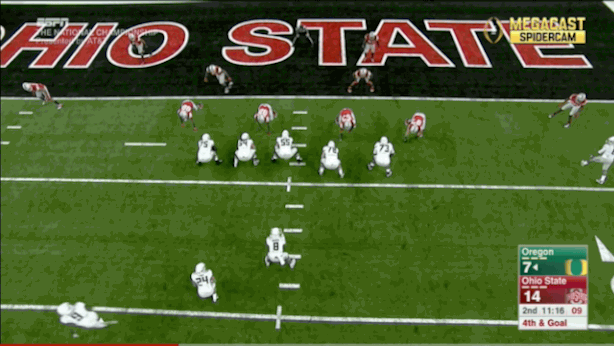
But Tyner, himself a former five-star recruit, was stuffed by the player once thought to be only the 29th-best player in Ohio. This stop shifted momentum in the direction of the Buckeyes, and the Ducks would never truly recover as they were forced to play catch-up the rest of the game.
As we look ahead to the 2015 season, the feelings about the back end of the Buckeye defense seem to have shifted 180 degrees. The Silver Bullet safeties are no longer a weakness, instead becoming the foundation upon which Ash can craft all future game plans.
Without a solid back line, Bosa's pass rush and Lee's zone blitzes are meaningless. But this pair also embodies a shift in overall philosophy on defense, as modern defenses must zag to balance the many zigs coming their way from spread offenses.
Gone are the days of employing players that can only line up in one spot and excel in only one area. Modern defenders must be able to wear multiple hats, lining up in different spots and making plays in space without receiving coaching adjustments in the limited time between plays.
Ash clearly trusts his safeties to do just that. Now, fans have reason to do the same.
